Pouring Water out of a Bottle Simulation, Ansys Fluent Training
$60.00 Student Discount
In this project, the Pouring Water out of a Bottle has been simulated and the results of this simulation have been investigated.
Click on Add To Cart and obtain the Geometry file, Mesh file, and a Comprehensive ANSYS Fluent Training Video.To Order Your Project or benefit from a CFD consultation, contact our experts via email ([email protected]), online support tab, or WhatsApp at +44 7443 197273.
There are some Free Products to check our service quality.
If you want the training video in another language instead of English, ask it via [email protected] after you buy the product.
Description
Project Description
In this project, Ansys Fluent software has been used for numerical simulation of pouring water out of the bottle. The Eulerian model has been used to simulate and solve the two-phase flow field equations. The Eulerian multiphase model in ANSYS FLUENT allows for the modeling of multiple separate yet interacting phases. The phases can be liquids, gases, or solids in nearly any combination.
Geometry & Mesh
The 2-D geometry of the present model is generated using SpaceClaim software.
The meshing of the present model has been done using Ansys Meshing software. The mesh type is unstructured in all of the computational domains, and the element number is equal to 150,642.
Pouring water CFD Simulation Settings:
We consider several assumptions to simulate the present model:
- Due to the incompressibility of the flow, the pressure-based solver method has been selected.
- The simulation is transient.
- The gravity effect is considered equal to -9.81 m.s-2 on Y-axis
The K-epsilon Standard viscous model with Standard wall function has been used to solve the turbulent flow equations. The pressure-velocity coupling scheme is SIMPLE. The second-order upwind discretization method has been used for Momentum, Turbulent kinetic energy, and Turbulent dissipation rate.
The boundary conditions and their details are shown in the figure below.
The following tables represent a summary of the defining steps of the problem in this project and its solution:
| Models | ||
| Multiphase | ||
| Model | Eulerian | |
| Eulerian parameters | Multi-Fluid VOF model | |
| Number of Eulerian phases | 2(air & water) | |
| Interface modeling | Sharp | |
| Formulation | Explicit | |
| Primary phase | air | |
| Secondary phase | water | |
| Viscous | ||
| k-epsilon | Standard | |
| Near wall treatment | Standard wall functions | |
| Material Properties | ||
| Air | ||
| Density | 1.225 | |
| viscosity | 1.7894e-05 | |
| water-liquid | ||
| Density | 998.2 | |
| viscosity | 0.001003 | |
| Boundary conditions | ||
| Outlet | Pressure outlet | |
| Methods | ||
| Pressure-Velocity Coupling | SIMPLE | |
| Pressure | PRESTO | |
| Momentum | Second-order upwind | |
| Turbulent kinetic energy | Second-order upwind | |
| Turbulent dissipation rate | Second-order upwind | |
| Volume fraction | Compressive | |
| Initialization | ||
| Initialization methods | Hybrid | |
| Patch | Phase | water |
| Variable | Volume Fraction | |
| Zones to patch | water | |
| Value | 1 | |
| Run calculation | ||
| Time step size | 0.0025 | |
| Max iterations/time step | 20 | |
| Number of time steps | 3708 | |
Pouring Water Results
After the solution process is completed, contours of water velocity, Pressure, water volume fraction, and Eddy viscosity are extracted. As can be seen, under the influence of gravity, the water inside the bottle starts to flow, and it discharges to another empty container and fills it.

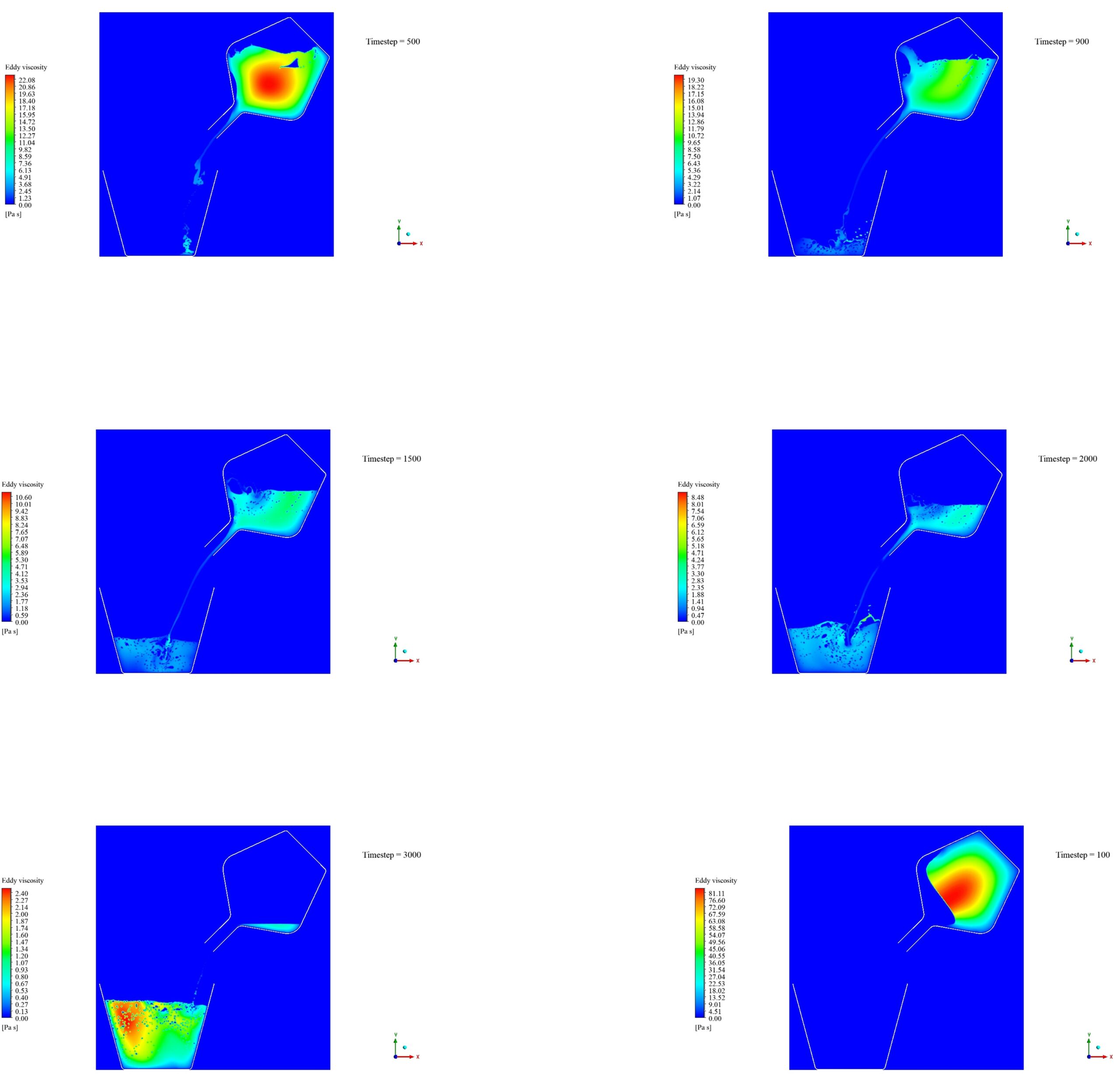
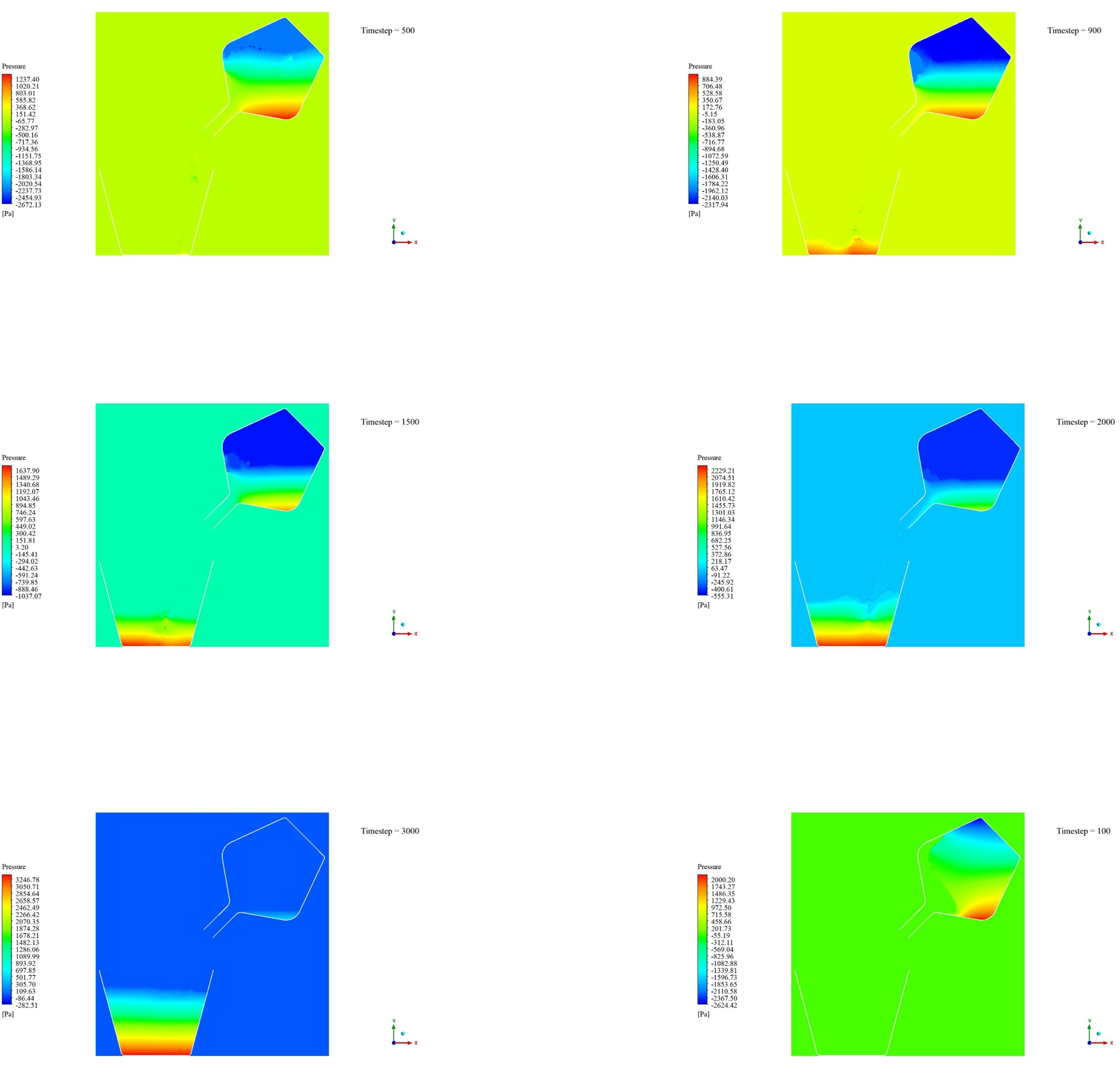
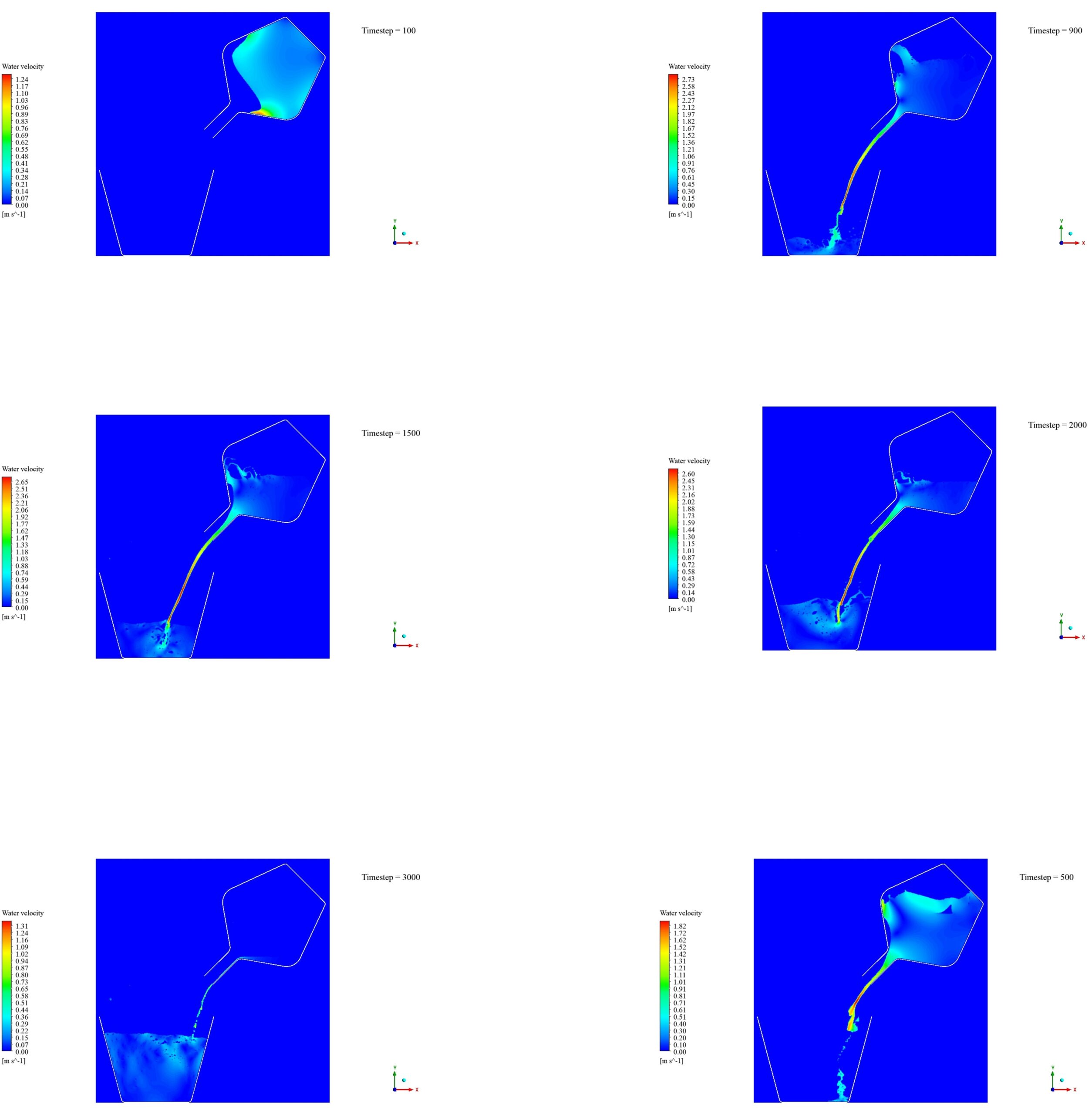
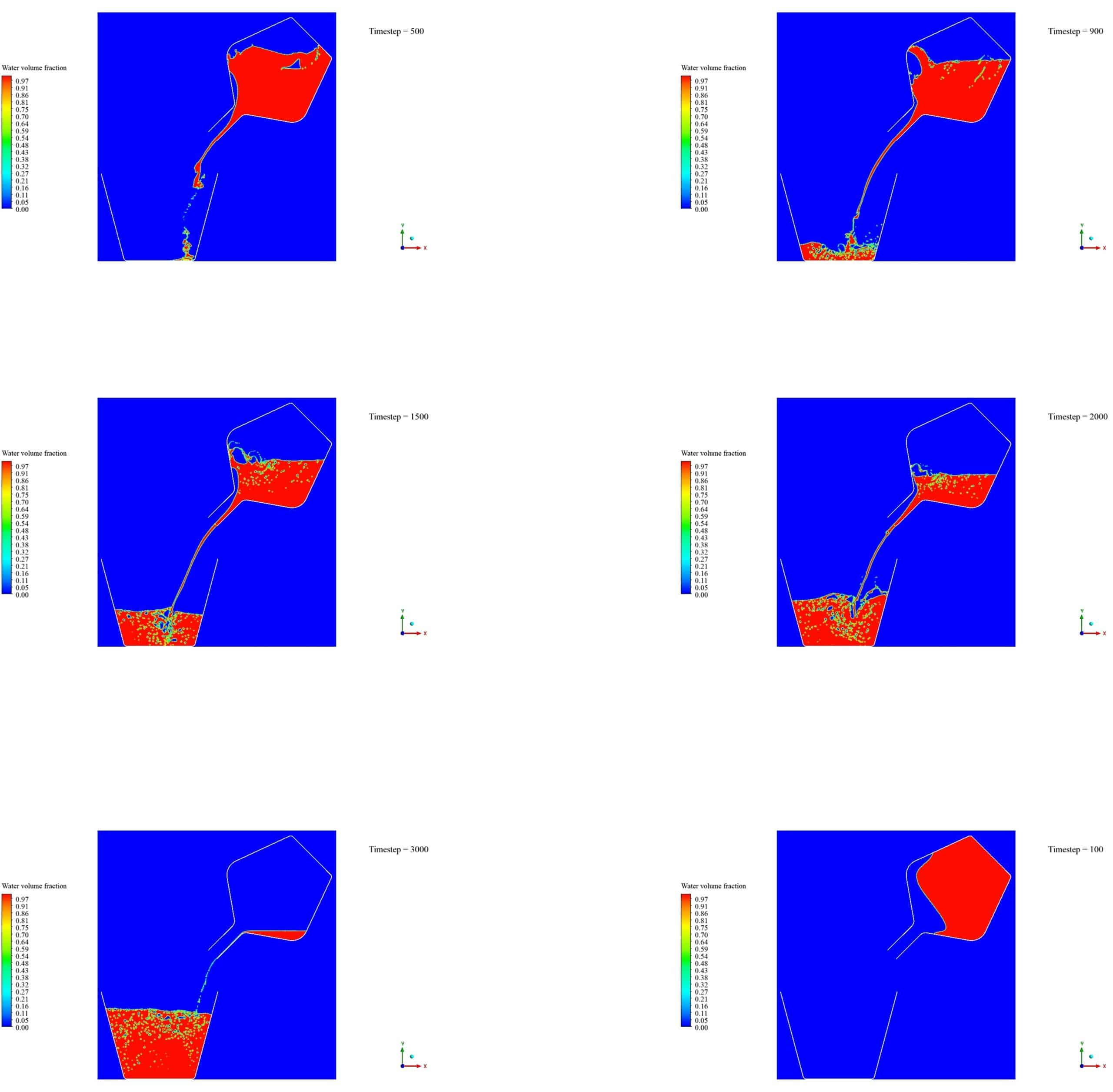

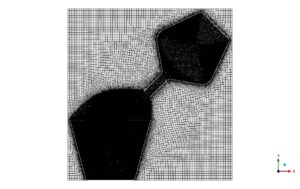
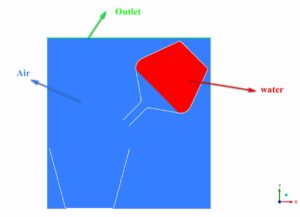
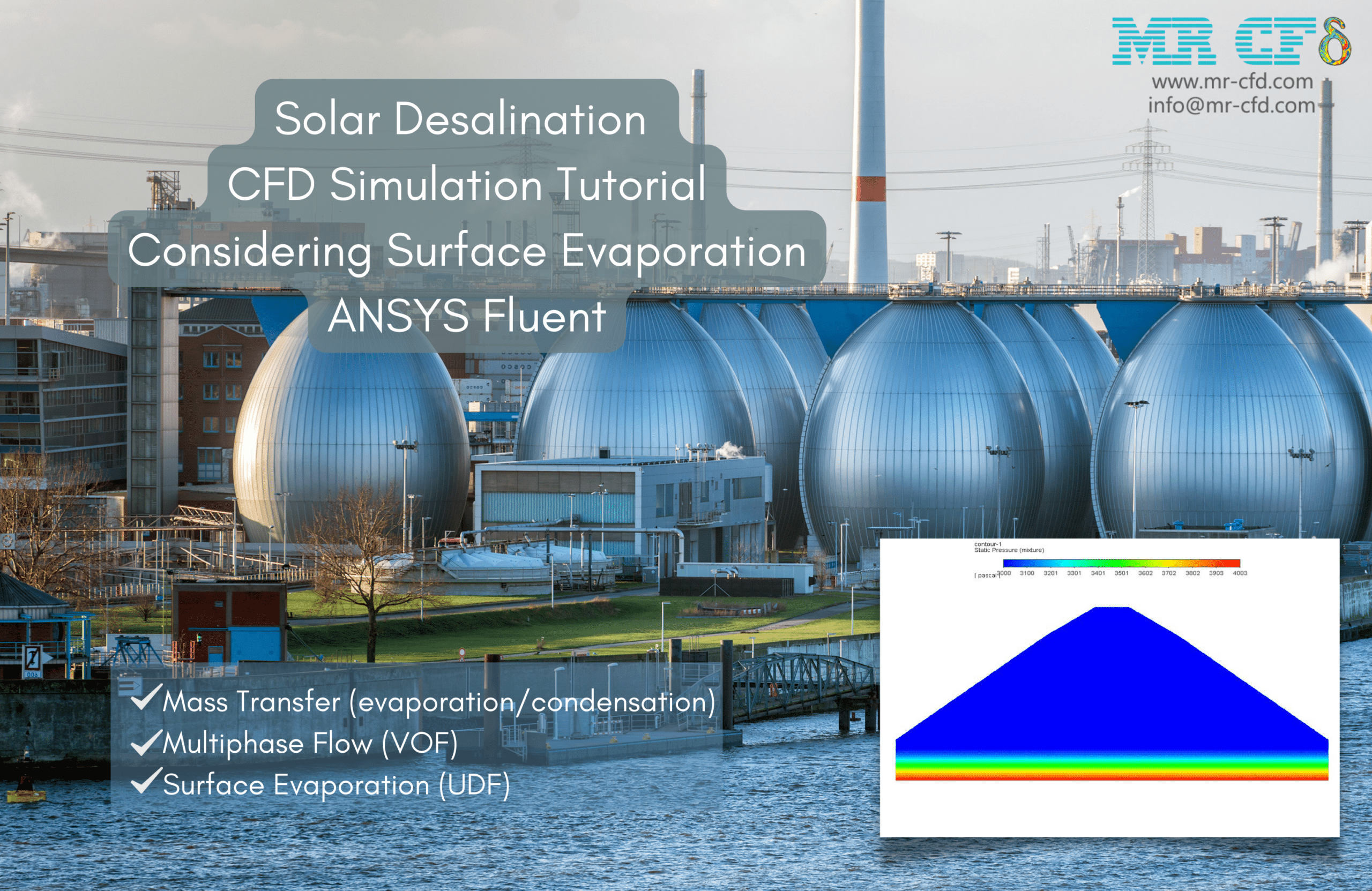
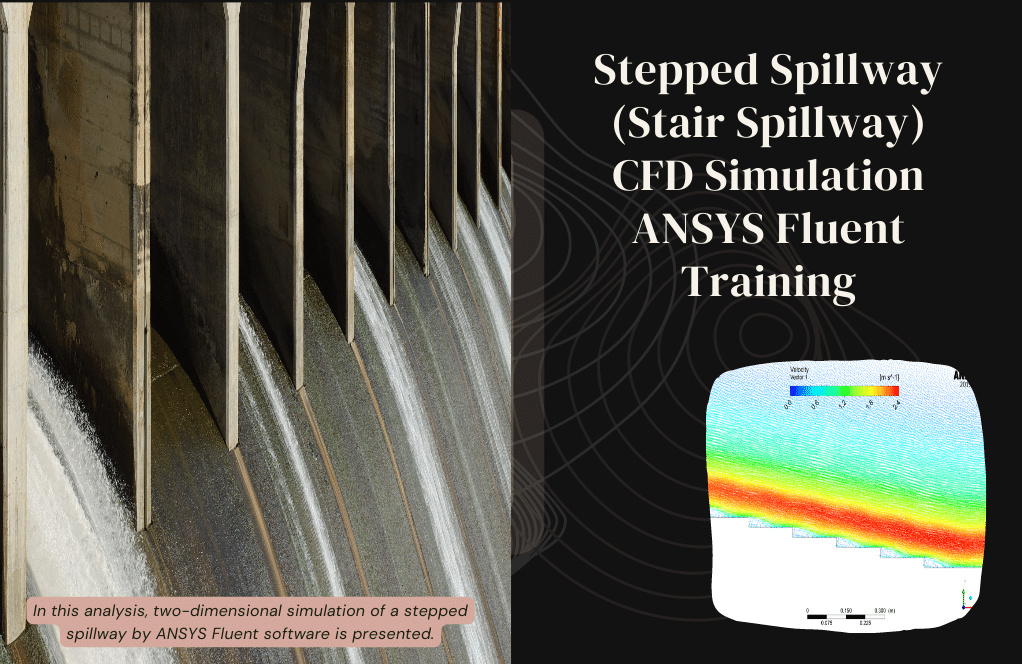
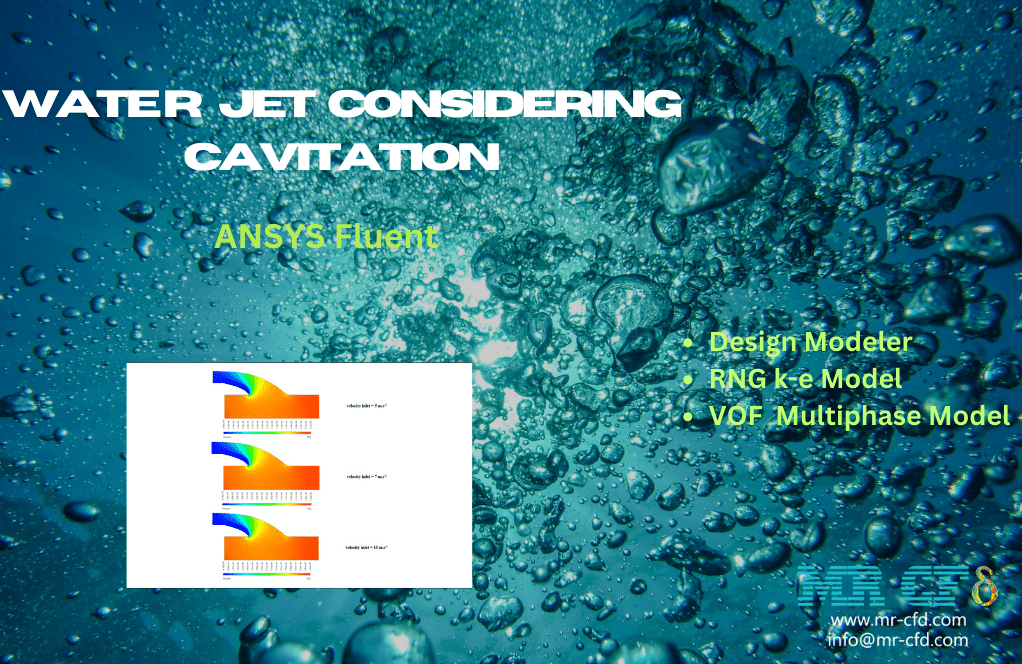
Lera Nader –
The detailed breakdown of the water pouring simulation settings is incredible! It’s really comprehensive and sounds like it’s been meticulously set up to reproduce a highly accurate representation of water outflow behavior.
MR CFD Support –
Thank you so much for your kind words! We are thrilled to hear that you found our simulation to be accurate and comprehensive. We aim to provide detailed and high-quality simulations to help users like you understand complex fluid dynamics. Your appreciation is greatly valued, and we look forward to continuing to offer you the best learning experiences with our products.
Lada –
Could you explain to me what is “Eddy viscosity”? I really appreciate it.
Wilford Lebsack –
Fantastic tutorial! The Eulerian multiphase model explanation was clear, and I successfully carried out the water pouring simulation from start to finish. The step-by-step setup process and the logical explanation of each phase and boundary conditions really helped me get it right the first time!
MR CFD Support –
Thank you for your positive feedback! We’re delighted to hear that our tutorial on water pouring using Ansys Fluent was helpful and that you could apply the Eulerian multiphase model effectively. Your success is very gratifying to us, and it motivates us to continue providing detailed and user-friendly instructional content. If you need further assistance or have any more queries, feel free to reach out!
Diamond Hills –
The detailed project walkthrough was quite insightful. I particularly appreciated the choice to use an Eulerian multiphase model to represent the water pouring dynamics accurately. It’s clear that a great deal of thought went into the selection of solvers and discretization methods—namely, the SIMPLE scheme for pressure-velocity coupling and second-order upwind for momentum and turbulence, ensuring a good balance between accuracy and computational efficiency. Watching the water dynamics as it exited the bottle and filled another container simulated the real-world phenomenon admirably and reinforced my understanding of fluid behavior in such interactive systems.
MR CFD Support –
Thank you for your kind words and appreciation! We are thrilled to hear that you found our detailed walkthrough insightful and that our selection of modeling and simulation strategies has deepened your understanding of fluid dynamics in interactive systems. We strive to provide accurate and efficient simulations that help our customers validate their hypotheses and get a close representation of real-world scenarios. If you have any further questions or need assistance with another project, feel free to reach out to us!
Marcellus Turner DDS –
I’m impressed with the details of the simulation for the pouring water out of a bottle project. The application of the Eulerian multiphase model seems ingenious for such fluid interactions. I’m particularly curious about the real-world applicability of the simulation—can it be applied to optimize bottling processes in factories?
MR CFD Support –
Absolutely! The simulation provides valuable insights into the dynamics of fluid behavior when pouring. Such information can indeed be applied in an industrial setting, specifically to optimize bottling processes, reducing spillage, and improving efficiency during filling operations. The precision and accuracy of CFD simulations facilitate the design of bottle shapes, nozzle designs, and pouring mechanisms to ensure a smoother flow and less waste. Additionally, these studies can help in determining optimal filling speeds and necessary adjustments for different liquid viscosities to maximize productivity and sustainability in production lines.
Ms. Ivy Stehr –
I’m deeply impressed by the multitude of details and the precision with which this simulation was executed. The granularity of the Eulerian multiphase model captures the complex interactions between the phases superbly. The visualization of this dynamic process must be quite enlightening, especially with the sharp interface modeling and comprehensive boundary condition settings providing clear insight into the fluid behavior.
MR CFD Support –
Thank you for your kind words! We are delighted to hear that our Pouring Water out of a Bottle Simulation has met your expectations. It’s always our goal to provide detailed and accurate simulations that enable a deeper understanding of fluid dynamics. We’re thrilled you found the visualization insightful. If you have any more feedback or need further information, feel free to reach out!
Billy Nienow –
This training was incredibly detailed and easy to follow. I am impressed with how the simulation of pouring water mimicked real-life fluid behavior. The results were well presented and comprehensive.
MR CFD Support –
Thank you for the positive feedback! We are delighted to hear that our training exceeded your expectations and that the realistic simulation provided you with clear and comprehensive results.
Piper Farrell V –
I am thoroughly impressed with how well the simulation of pouring water out of a bottle has been portrayed in Ansys Fluent. The detail in the meshing and setup showcase the dedication of the MR CFD team.
MR CFD Support –
Thank you for your feedback! We’re pleased to hear that our dedication to accuracy and detail in the Ansys Fluent simulation was apparent. Our team strives to provide valuable and high-quality educational content.
Kennedy Botsford –
This training helped me understand multiphase flow simulations in a detailed scenario like water pouring. The setup description is very thorough. Could an even finer mesh improve result accuracy for such simulations?
MR CFD Support –
Indeed, using a finer mesh may potentially improve the accuracy of the results by capturing flow details more precisely. Finer meshes often better resolve the boundary layer and the interface between phases, but they also increase computational cost. It’s crucial to find a balance between accuracy and computational efficiency when choosing your mesh resolution.
Miss Alysa Bednar III –
The explanation of the pouring water simulation is very clear. Great job on showcasing the impact of solver settings in such a thorough way!
MR CFD Support –
Thank you for your kind words! We’re pleased to hear you found the simulation details and the illustration of the solver settings comprehensive and helpful. If you need any further information or have additional questions, please don’t hesitate to reach out. We appreciate your feedback!
Elenora Hansen –
I’m really impressed by how this simulation captures the fluid dynamics of pouring water. The level of detail in the results showcases the capabilities of Ansys Fluent for real-world applications. Well done!
MR CFD Support –
Thank you for your compliments! We’re glad to hear that you appreciate the effort and detail that went into this simulation project using Ansys Fluent. If you have any questions or need further information, please feel free to reach out.
Prince Cormier –
I found the explanation of the multiphase model and the boundary condition setup particularly helpful. The step-by-step setup made it easier to follow through with my own project.
MR CFD Support –
Thank you for your positive feedback! We’re delighted to hear that our detailed description of the multiphase model and boundary condition setup was useful for your project. If you have any further questions or need assistance with another project, please let us know.
Rory Kilback V –
I just wanted to say that I’m super impressed with the Pouring Water out of a Bottle Simulation training using Ansys Fluent. The detailed explanation of the physics underlying the simulation, the meticulous treatment of multiple phases, and precise mesh generation all come together to create an incredibly useful learning tool. The setup and interpretation of results are laid out clearly, making it easy to understand even complex aspects. Great work!
MR CFD Support –
Thank you for your kind words! We’re really pleased to hear that you found the Pouring Water out of a Bottle simulation training valuable and easy to understand. It’s great to know that the detailed process and results were helpful to you. If you have any more questions or need further assistance in your learning journey, feel free to reach out!